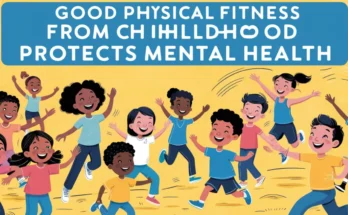Hello, Beautiful People! Have you ever watched your child play and wished their bones were super strong? Well, the secret to strong, powerful bones is calcium!
This post is all about fun facts about calcium that will make your child go “Wow!”
Let’s talk about 7 yummy methods to add calcium into your kid’s diet. We’ll also see how calcium works, it’s sources, fun tips, importance and more. As parents, we should make sure our children’s health is our top concern. In this blog post, we’ll put our heads together about interesting facts about calcium.
Let’s dive into the world of calcium and boost our kid’s bones!
Top 7 Fun Facts about Calcium for Kids!

| No. | Category |
|---|---|
| 1 | Powerful Bones and Teeth |
| 2 | Milk and More! |
| 3 | Busy Body |
| 4 | Stored in Bones |
| 5 | Bone Bank |
| 6 | Helps with Healing |
| 7 | Found in Nature |
Fun Fact 1:Powerful Bones and Teeth
Calcium is necessary for developing powerful bones and teeth. It acts like a building block. It provides the strength for our bones and teeth to function. Without calcium, bones can become weak.
How Calcium Works
Calcium is stored in bones. It helps maintain bone strength. In teeth, calcium helps to form a hard outer layer called enamel. This layer protects against damage.
Sources of Calcium
- Dairy Products
- Green Vegetables
- Fortified Foods
- Fish.
Fun Tips for Kids About Calcium
- A glass of milk with meals is an easy way to get calcium.
- Cheese slices make a tasty snack.
- Try adding some spinach to smoothies.
Fun Fact 2: Milk and More!
Calcium is important for our health. The good thing is there are many delicious ways to get it! While milk is a well-known source of calcium, there are many other tasty options to make sure you get this.
Dairy Delights
- One glass of milk is a perfect way to begin the day.
- Cheese has a lot calcium.
- Yogurt also contains calcium. It can be enjoyed with fruits too.
Green Goodies
- Broccoli is a good source of calcium.
- Spinach can be added to salads or smoothies etc.
- Kale is full of calcium.
Fun Tips for Kids About Calcium
- You can include some fruits into your yogurt for a healthy, tasty meal.
- You can have broccoli with your favorite dip for a crunchy munch.
- You can mix up spinach into a fruit smoothie and gulp down a healthy drink.
The following video is about delicious recipes for kids with calcium:
Fun Fact 3: Busy Body
Calcium is required to make bones and teeth powerful. It plays a major role in many other functions in your body. Following are points that show how calcium helps keep your body keep busy:
Muscle Movement
Calcium is needed for muscles. It helps them contract and relax properly. It helps you move, run, jump, and play! Your heart is a muscle too, and calcium helps it beat regularly.
Nerve Function
Calcium helps send messages from our brain to the all body through nerves. When we get a cut, calcium helps us protect the wound and stop bleeding.
Sources of Calcium
- Dairy Products
- Green Vegetables.
- Fortified Foods.
- Fish
Fun Fact 4: Stored in Bones
Calcium is like a jem that is hidden in our bones. It provides strength and support to our skeleton. Our bones act as a warehouse for storing calcium. It helps us stand tall, move, and play.
Why Is Calcium Important?
As our children grow, their bones get bigger and powerful. Calcium makes sure their bones develop properly.
Sources of Calcium
- Milk
- Cheese
- Yogurt
- Broccoli
- Spinach
- Kale
- Cereals.
Fun Tips for Kids About Calcium
Enjoy snacks like cheese sticks, yogurt cups, almonds etc. for a tasty calcium boost. You can try adding broccoli or spinach to your meals for an extra dose of calcium.
How to Get Enough?
You should include different foods that are rich in calcium in your daily meals. Physical activity, helps keep your bones strong. It includes running, jumping etc.
Fun Fact 5: Bone Bank
Let’s first understand “bone bank“. It is an easy method to understand how calcium is stored in our bodies. Consider your bones as a bank where you deposit and withdraw calcium. When we eat foods that are rich in calcium, our body stores this calcium in our bones.
This stored calcium is necessary for maintaining powerful and healthy bones. During childhood and teens, these stored calcium is important because bones are growing at a fast rate. However, the “bone bank” isn’t just for kids; adults need this too. It is used to support their calcium deposits and keep bones powerful. It also put a stop to diseases like osteoporosis.
Our body also remove calcium from your bones when it’s needed for other necessary functions. For example, muscle contractions, blood clotting etc. If your diet doesn’t provide adequate amount of calcium, your body will take what it needs from your bone bank. This will weaken your bones over time.
If you want to maintain a healthy bone bank, you must involve regular calcium through a balanced diet. Exercise, also helps make powerful bones.
To keep your kids’ teeth healthy, include these nutrients in their diet:
1. Calcium
2. Vitamin D
3. Phosphorus
4. Vitamin C
5. Fluoride
6. Vitamin A
7. Protein
8. Vitamin K
9. Iron
10. Vitamin B#kids #nutrition— arielobaby (@arielobabies) July 28, 2024
Fun Fact 6: Helps with Healing
Calcium is not just important for powerful bones and teeth; it also plays a necessary for helping our body heal. Following are some points about healing process:
Blood Clotting
When we get a cut, our body needs to stop the bleeding. Calcium helps in forming blood clots. They seal the wound and put a stop to excess bleeding. After the clot formation, a scab develops over the wound. This protects the wound while new skin grows underneath.
Bone Repair
If our one bone is broken, calcium helps repair it. Our body uses calcium to form new bone tissue. This helps the bone heal and become powerful again. Even after the bone is healed, calcium continues to play a role in modifying and strengthening it.
Muscle Repair
Calcium helps muscles recover after exercise or injury. It plays a part in muscle contraction and relaxation. This is necessary for healing muscle tissue.
Immune Function
Calcium is involved in activating some special immune cells. They help fight infections. They make sure wounds heal without hurdles.
Fun Tips for Kids
You should choose snacks like cheese sticks or almonds to get a calcium boost. You can add spinach to your meals for extra calcium.
Fun Fact 7: Found in Nature
Calcium is a necessary mineral that’s found not only in our bodies but also everywhere in nature. Following are some interesting ways calcium appears in the natural world:
In the Ocean
Many sea creatures have shells made of calcium carbonate. These shells provide protection to animals inside. Coral reefs are built by tiny organisms called coral polyps. They secrete calcium carbonate to form the protective skeletons of the reefs.
In Rocks
Limestone is a type of rock that is rich in calcium carbonate. It is formed from the remains of ancient marine organisms. It is used in building materials and industrial processes. Chalk is another type of rock. It is also made of calcium carbonate. It is formed from the tiny skeletons of microscopic algae.
In Soil
Calcium is a important nutrient for plants. It helps build powerful cell walls It supports the plant’s structure and growth. Farmers add calcium to soil in the form of lime. This makes better crop yields.
In Your Body
The most well-known role of calcium in your body is in building and maintaining strong bones and teeth. Calcium is also needed for:
- Muscle movement
- Nerve function
- Blood clotting.
Fun Tips for Kids About Calcium
The shells of bird eggs are made primarily of calcium carbonate. They provide a strong protective layer for the chick that is developing inside.
Just like human bones, dinosaur bones were made of calcium. Fossilized dinosaur bones still contain calcium. This helps scientists study these ancient creatures.
Conclusion
In conclusion, calcium is more than just a nutrient. It’s like a superhero for your child’s bones. By adding your child’s meals with tasty ideas, you can make eating calcium a fun adventure. Teach your kids about the advantages of calcium and powerful bones. In this way, they’ll be strong and healthy!
Keep inspecting creative ways to get calcium into your child’s diet. Watch them grow with powerful bones and endless energy. Let’s celebrate each meal as a step towards more powerful bones and a brighter tomorrow!
Let me know which way you consider the best for consuming calcium?
FAQ
Q: How can I make my child eat foods that is rich in calcium because he eats specific?
A: You should try different recipes. Also, involve your child in meal planning. Offer them different foods that are rich in calcium. In this way, you can make mealtime fun.
Q: Can too much calcium damage my child’s health?
A: Too much calcium can lead to disorders like:
Kidney stones
Difficult absorption of minerals
Always take in the recommended daily dose of calcium.
Q: How much calcium does my child need?
A: The recommended daily calcium intake is different for kids of different age groups. The following table explains the recommended daily calcium intake:
Age Group | Recommended Daily Calcium Intake |
1-3 years | 700 mg |
4-8 years | 1000 mg |
9-18 years | 1300 mg |
Q: List signs of calcium deficiency in my kids.
A: Signs of calcium deficiency in children are:
Subtle
Fatigue
Muscle cramps
Weak bones
Delayed growth.
Q: List source of calcium, except milk.
A: Milk is a good source of calcium. But, there are many other options too. Some of these are:
Leafy green vegetables
Fortified foods like cereals
Plant-based milk
Yogurt
Cheese
Tofu
Some nuts and seeds.




